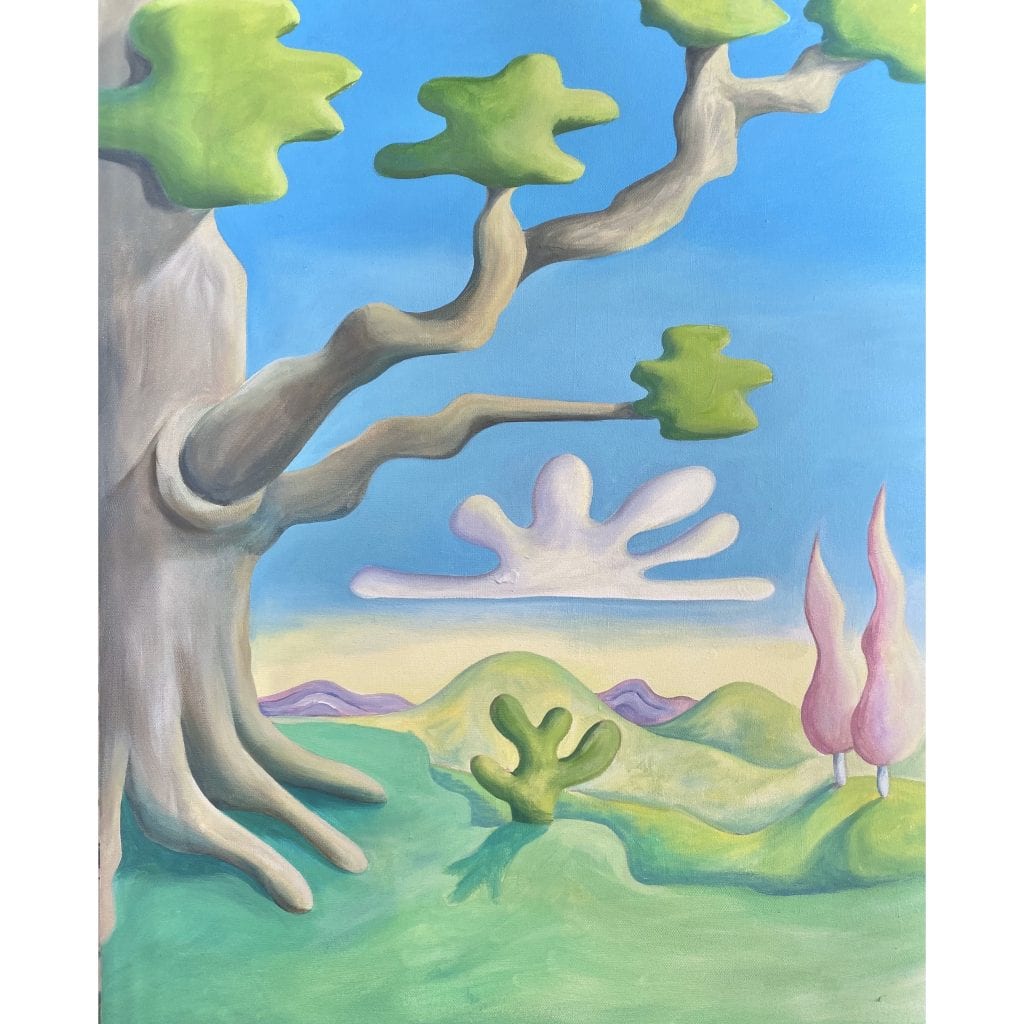Daisy Dodd-Noble paints caricatures of familiar landscapes; hills, trees, and skies. Exploring the larger topic of environmentalism, her surrealist scenes give way to an alternate reality. Perhaps implying the solution to that “feeling of loss as we exploit the natural world” is just out of reach. Her connection with nature comes from a certain energy she picks up on in figures from her day-to-day life. She is aware of the bigger picture and calls on these otherwise mundane subjects to spread awareness for environmental conservation. In the images of her work below, you can pick up on the subtle light relationships she learned while during her time at the New York Academy of the Arts. This technique helps with that smooth shading she establishes to explore those larger topics mentioned above. The feeling of whimsy her oscillating landscapes provoke is inescapable in the hands of this approach.
Courtesy of the artist.
Tell us a little bit about yourself. Where are you from originally and when did art first enter your life?
I am originally from London. Art first entered my life at age 8 when I would obsessively draw horses, and only horses up until the age of 15 when I branched out a little.
You previously worked in the oil and gas industry, why did you make the switch to art and what was that transition like?
It didn’t really feel like a choice…. I was living in Dubai at the time, where there is some amazing contemporary art. I went to the “Art Dubai” fair and some galleries in Al Quoz. Seeing all the amazing work, I longed to be able to create works like those artists. I plotted the switch for a year or so, saving money and taking night classes to get into an MFA program and here we are.
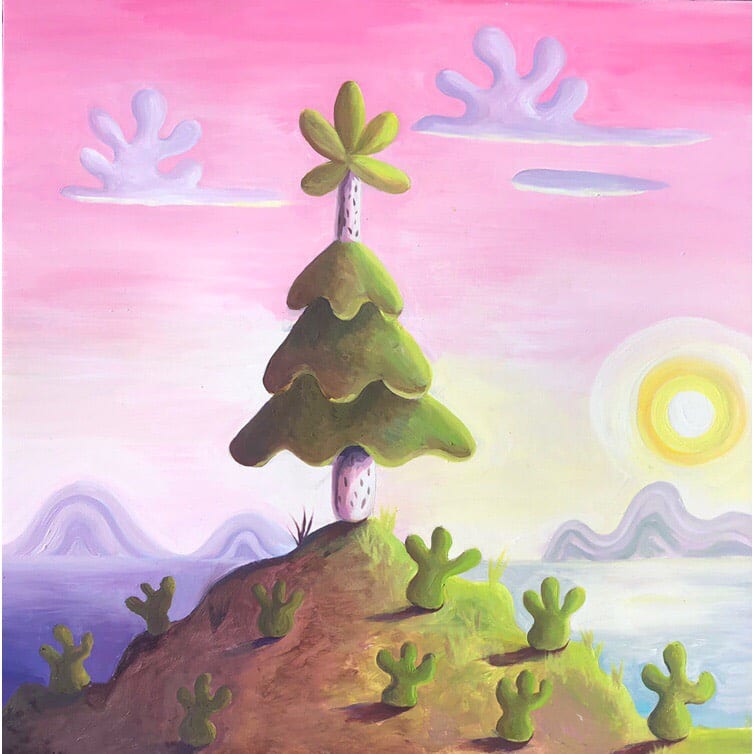
Courtesy of the artist.
Has your work always taken on the style it currently embodies?
No, it was very traditional pictures of horses and dogs when I was growing up. At NYAA I relied heavily on copying photographs, but we had an amazing teacher called Inka Essenhigh who encouraged students to work from their imagination, and she would take us through meditations in class.
What is your process like? How do you begin a work?
The main way I begin a painting is in the moment. I will see a tree, either out running or walking that displays personality, or has a certain energy. I make a note of its features or take a picture of it and sketch it later on in my sketch book. It then becomes a character, and I design a landscape composition around it. The characters I like the most I will reuse again and again. I choose my favourite colours to integrate into the landscape, but I follow rules in colour theory and light relationships that I learnt at NYAA.
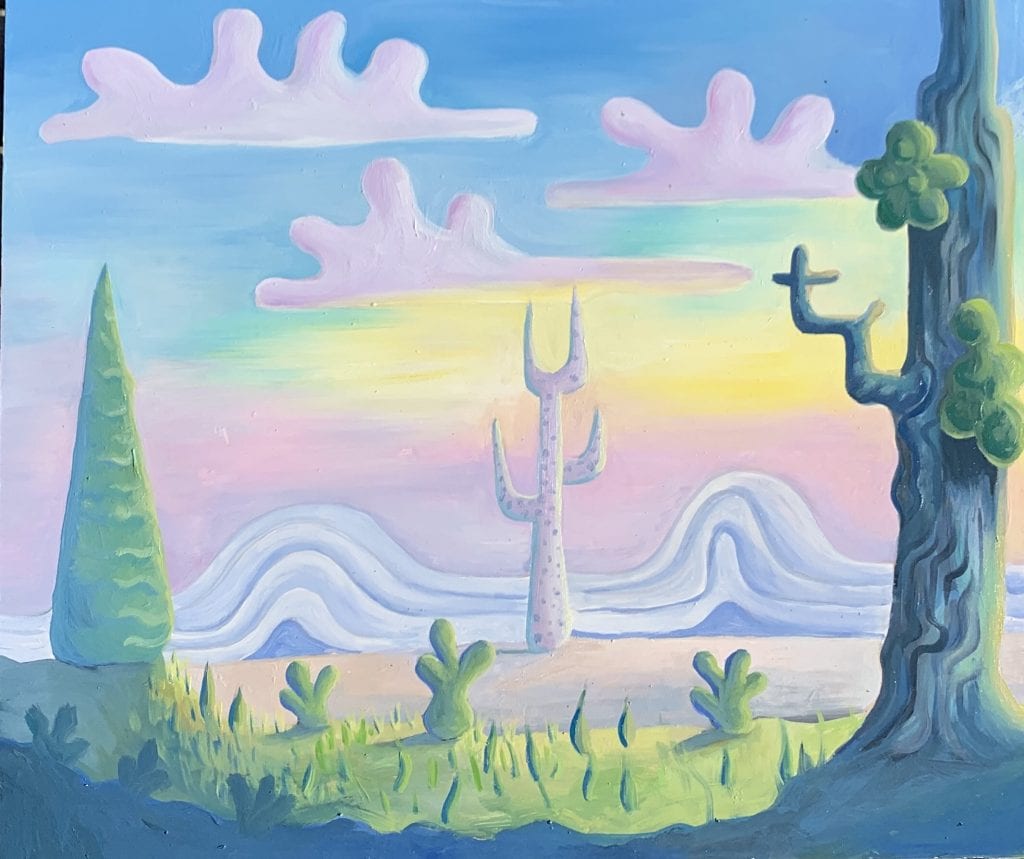
Courtesy of the artist.
Could you comment on your use of color to make these bright, whimsical scenes? How did you come to use this palette?
Bright colours just appeal to me, they always have. But there are so many rules about colour and how to use it. My work has adapted as I have developed a of better understanding of colour and light in nature.
From where do you draw inspiration?
Nature mostly and mainly trees and plants. But also some skies.
Does your work reference any Art Historical movements or figures?
Not really, surrealism, maybe. I admire so many amazing artists throughout history and I love looking at art. I am constantly looking at the way in which artists in the past depicted nature, for example Tarsila do Amaral did some really interesting landscapes.
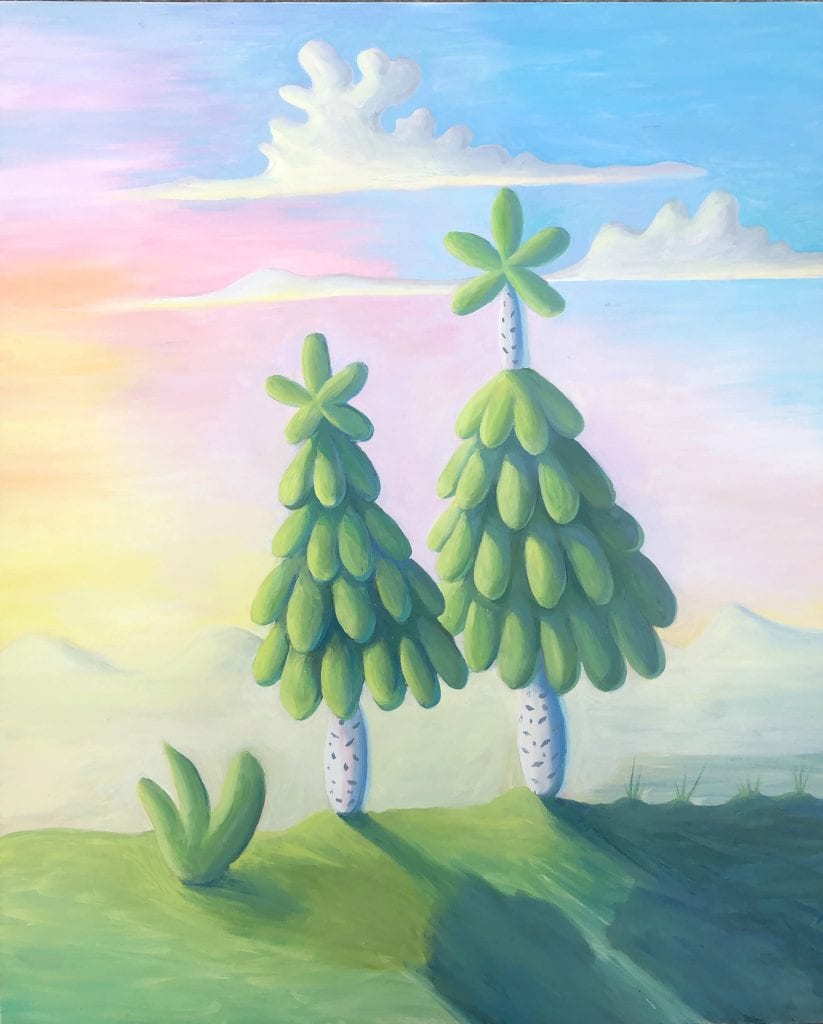
Courtesy of the artist.
Which artists would you say have influenced you the most and why?
I love Lisa Yuskavage’s work. She understands colour so well. I go to all her shows and I have been meaning to buy her book. There is so much to learn from her work. The way that she uses colour to represent light, or highlight an object or human form. She has such a good command of colour that she almost displays a sense of humour in the way she uses it. I watched a lecture she gave where she gave advice about working in monotone, and having clean brushes.
Are you attempting to explore any larger ideas or questions in your work? If so, what would you say those are?
Consciousness I suppose, or our connection with nature. Our need to be in nature… And that feeling of loss as we exploit the natural world.
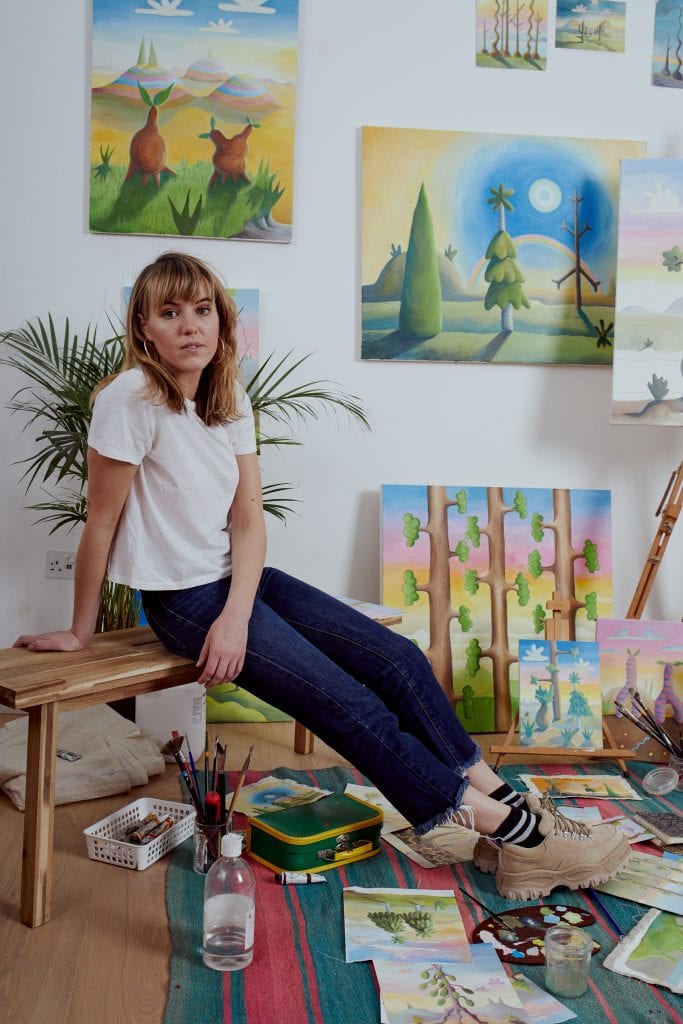
Courtesy of the artist.
What’s next for you?
I’d like to exhibit my work at some point. I have a new studio in West London, which I share with two other artists.
At the end of every interview, we like to ask the artist to recommend a friend whose work you love for us to interview next. Who would you suggest?
Ryan Michael Ford is an artist whose work I love, it makes me so happy. He reads a lot and has so many fascinating insights about the mind.
